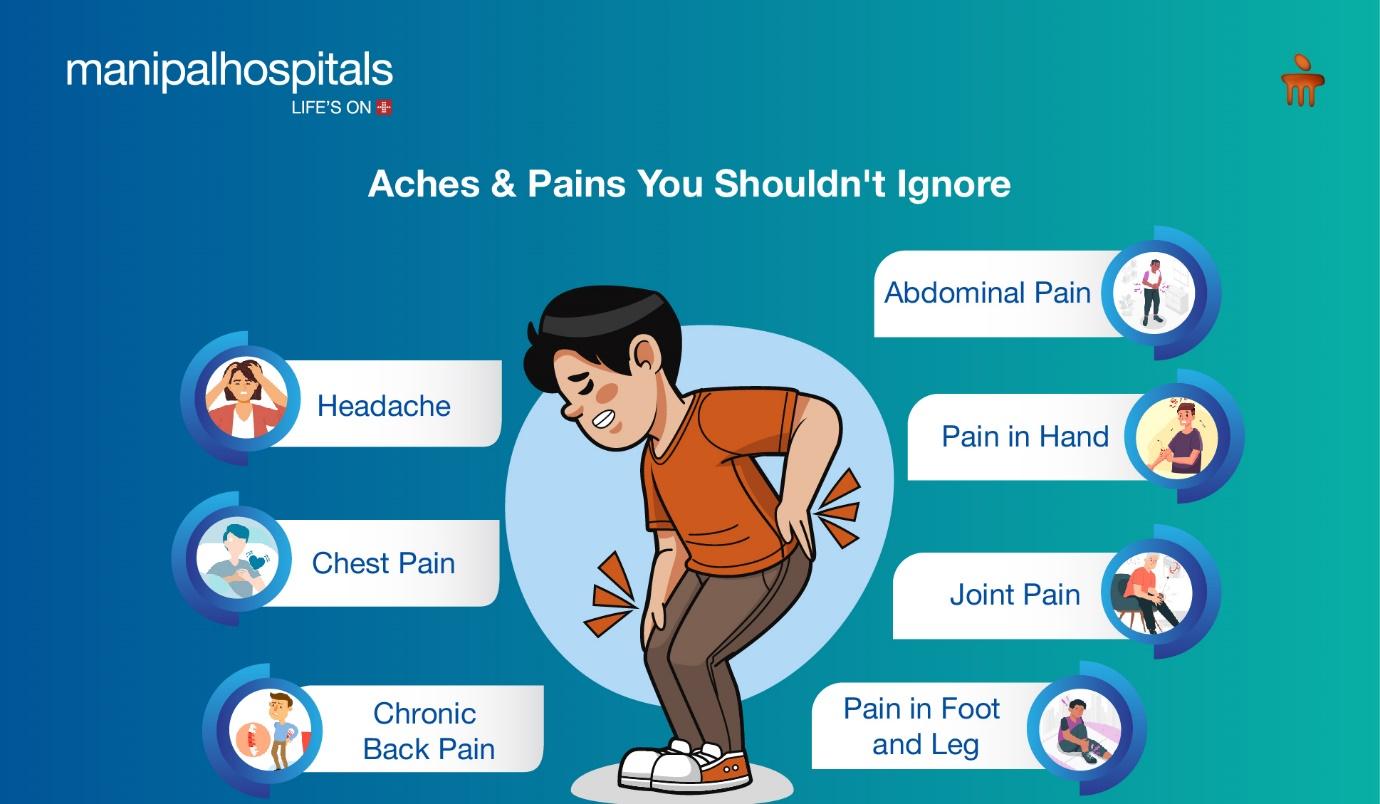
Acute pain is the body’s protective signal to promote healing and prevent further injury. Pains make us rest and tend to the injured areas. Most pains are temporary and not only harmless but protective. But pain lasting longer than the healing time of the body, termed ‘chronic pain’, on the other hand, can be detrimental. Such pains can either indicate something sinister or lead to changes in the pain processing system in the brain, akin to a software issue, that can potentiate a vicious cycle of pain propagation and persistence. Nipping the cause of chronic in the bud is ideal as the more chronic the software issue gets, the more difficult it is to treat.
Chronic pain is known to be a common cause of depression, poor quality of life and tends to lead to a sedentary lifestyle that amplifies other co-morbidities such as obesity, Diabetes, Hypertension, dyslipidemia, heart attacks and strokes. If you feel your pain is lasting longer than 1-3months, is increasing gradually, or is associated with any of the following so-called ‘Red flag signs’ I.e. danger signs- weight loss, loss of sensation, weakness in certain areas, difficulty in walking or moving, bowel and bladder disturbances, history of recent trauma or accident etc., it would be prudent to get evaluated at the earliest at a recognised pain medicine hospital.
Along with the common ‘Red flags’ there are some conditions that present along with common innocuous pains that may point towards an underlying medical condition warranting timely attention.
8 Aches and Pain You Must Not Ignore

-
Chest Pain
Although a common cause of chest pain is gastritis and indigestion, in the presence of risk factors such as older age, diabetes, hypertension, dyslipidemia, smoking, blood in cough, and breathlessness among others, the chances of a heart-related condition is a real possibility that should not be ignored or treatment delayed. In the case of deaths due to heart attacks, for most people, the first cardiac symptom was their last.
-
Headache
Chronic headache is probably one of the many treatable headache disorders such as migraine. But in the presence of vomiting, ‘Red flags’, neck stiffness, speech difficulty, excessive drowsiness, hearing loss etc., it could point towards increased pressure on the brain tissue due to infections, bleeding, tumours etc.
-
Joint pains
In the elderly, the presence of gradual onset pain in one or 2 joints could be age-related degeneration such as Osteoarthritis, but if multiple joints have pain, there is a rapid flare especially in the mornings or in cold weather, associated with an increase in the heat with swelling in joints, it could indicate a rheumatological condition which requires specialized treatment under the guidance of a Rheumatologist to avoid irreversible joint deformities, as many patients with such conditions end up bed bound if untreated. Chronic pain due to osteoarthritis can be very disabling too but can be managed surgically or non-surgically via multiple specialized injection techniques.
-
Leg pain
Although acute pains are commonly seen with muscle or ligament strains and sprains or due to overuse injury, pains that have the character of being shock-like, pins and needles or burning type could indicate nerve issue or sciatica. In the presence of ‘Red flags’ it could lead to serious complications resulting in irreversible weakness or bowel bladder issues. Pain increasing with walking a certain distance or with swelling in the legs with temperature difference could imply a problem in the blood supply or pressure on the nerve supply.
-
Back pain
One of the commonest pains is mostly benign like leg pains. The back has many structures that can be ‘pain generators’. These include muscles, ligaments, discs, bones, the lesser-known facet and sacroiliac joints. Pain in the back could radiate from abdominal or pelvic structures as well such as in pancreatitis, endometriosis, colitis, etc. Back pains are more complex than leg pains and need careful examination to make a timely diagnosis. Sciatica or leg pain associated with back pain could imply compression of the nerves in your spinal canal, if severe and not addressed on time, especially in the presence of ‘Red flags’, can result in permanent bladder-bowel or lower limb dysfunction.
-
Abdominal pain
There are numerous structures in the abdomen. Acute pain could just indicate indigestion or gastro-enteritis, or in severe cases could indicate more serious conditions like pancreatitis, appendicitis, perforation, obstruction etc. Passing blood in stool or black stool in the past or not passing stool or flatus are ‘Red flags’ here. Abdominal pain with severe vomiting, fever and diarrhoea should also prompt medical assistance.
-
Painful urination
Burning pain with symptoms such as urgency, increased frequency, urine discolouration, foul smell, sediments, white discharge or fever could indicate a urinary infection. In the elderly, urinary tract infections can be deadly if left to fester too long.
-
Hand and foot pain
Pain generators here include ligaments, tendons, joints and nerves. Nerve-related issues such as Carpal tunnel syndrome, and diabetic neuropathy are common. If such issues are left chronically they can lead to loss of sensation resulting in difficulty in holding objects or walking. Multiple joint pains in the extremities could imply a rheumatologically condition as well.
Most pains, including cancer-related pains, are manageable to a large extent with the right tailored treatment. The goal of pain management is to improve mobility and quality of life. Among the various specialities in modern medicine, a new speciality is now emerging to deal specifically with chronic pains holistically with medicines or targeted injections. This is called Pain Medicine, Pain Management or Interventional Pain Medicine. Such specialists have the knowledge and skill to evaluate, diagnose and treat chronic pains non-surgically, and if required, point you to the right surgical speciality for your condition.
It is better to get chronic pain treated by a specialist at the earliest to enjoy a better quality of life, prevent complications and limit the effect of other co-morbidities.





















 5 Min Read
5 Min Read















